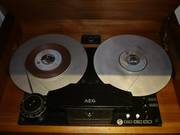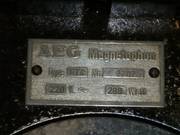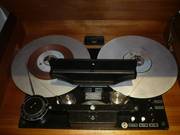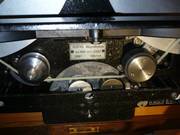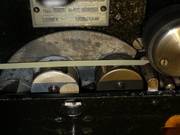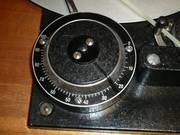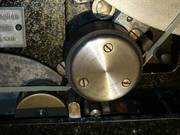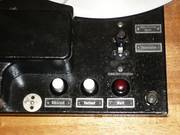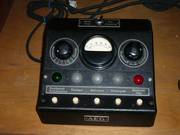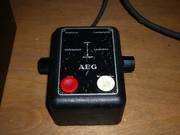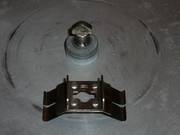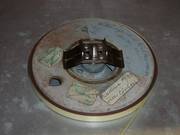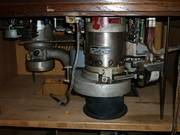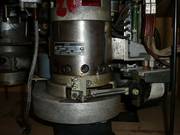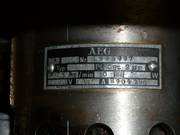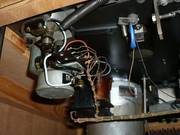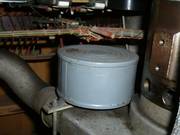Die AEG FT4 von David Winter aus Paris
Man kann sie sogar besichtigen, in Paris natürlich.
David hat uns vorab folgenden Text geschickt:
The FT4 is an improved FT3 machine. It is operated by the remote controls. Manual operation is also possible, but limited to fast forward/rewind and stop. The switch on the right of the transport selects the manual or remote operation. Unlike the FT3, the FT4 does not have a built-in speaker: it is external like the K1/K2 series, but the amplifier is built in the machine. The amplifier uses three tubes: AZ1, AF7 and AL4. The restoration of the amplifier is somewhat difficult because it uses several capacitor blocks which must be removed and emptied to place new capacitors inside.
As can be seen on picture 4, the capstan is smaller than the K series. As a matter of fact, the FT machines were used to record long speeches, so the tape duration was increased to a little bit more than one hour by a reduced speed of 25cm/s. Therefore, the motor speed was reduced to 680rpm and the capstan diameter was reduced to 7mm in diameter.
The rotary head assembly is same as the K1/K2 machines: either the playback head is selected and touches the tape, or the erase (DC bias) and record heads are selected. This is done by an electromagnet which triggers the assembly.
The gauge on the left allows checking the amount of remaining tape. A very light lever touches the left reel with very low pressure to avoid damage, which is almost impossible here considering the low speed. However, a higher speed like 76cm/s would have increased the friction with the tape, and therefore, eventually caused minor damage like microscopic scratches, although the sound would not have been altered by this.
Die Bedienung des Laufwerkes
The remotes control the whole machine: fast rewind, fast forward, playback, recording, stop, and even machine shut-down. Volume control is also present, both in playback and recording.
The early reel locks can be seen here: they only pinch the reels with their platter. Unlike the later rectangular hole cores, the early tapes are only drived by friction. For that reason, engaging the fast rewind or forward causes the tape reel to gliss on the platter during a short time until full friction is obtained. This is why the platters of such machines show some wear under the cores. To put the tape reel, the lock is pushed town and turned 90 degrees.
The last picture short an amazing can: this is the 2µF capacitor for the motor.

